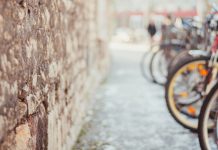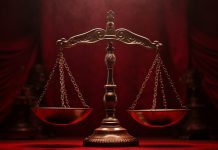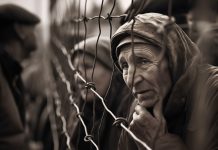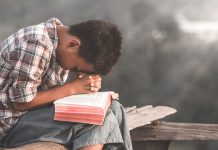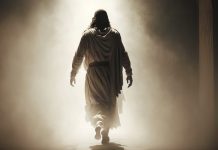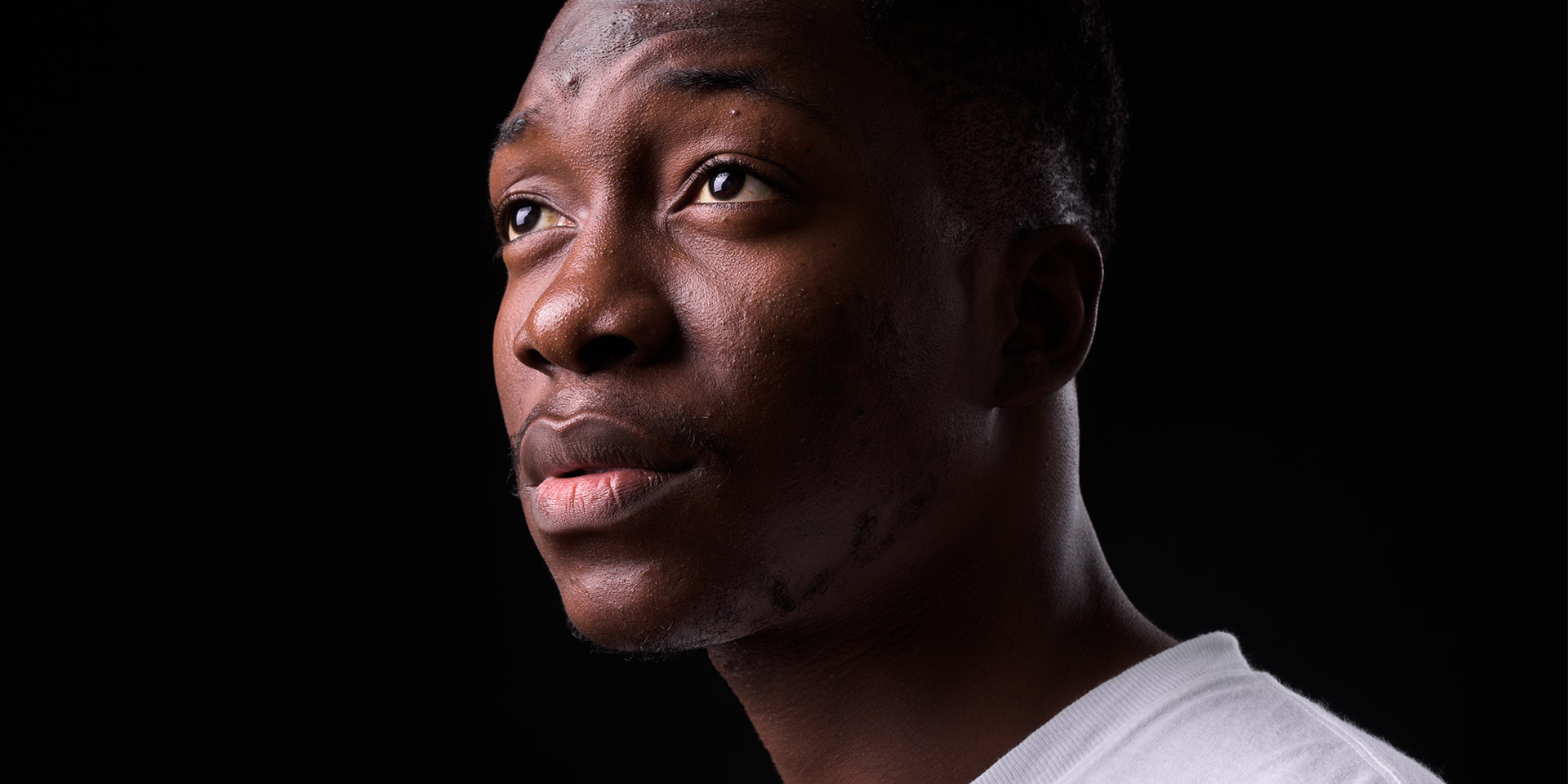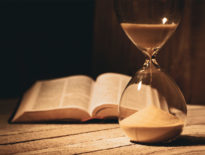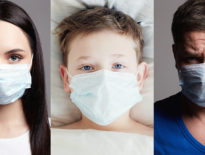Streets paved with broken glass, cars burning, shops looted, a vandalized CNN headquarters, street fights, Washington, D.C. under siege, thousands of arrests — the United States is “at war with itself“, and to probe why has it reached such a point we must look beyond the tip of the iceberg.
Well into the second week of unprecedented protests, looting and rioting, the United States seems unable to put out the violence stemmed after the killing of an African American man by law enforcement. Too few had heard of George Floyd until 10 days ago, but today his name travels around the world, and his death has generated a chain of protests in the country, but also in 25 other countries, on all continents except Antarctica.
The story of the man who begged to be allowed to breathe
George Floyd’s life had its ups and downs. He grew up in Houston, Texas, and played on the John Yates High School football team. He was then recruited to play basketball at South Florida State College in Avon Park, Florida, where he studied from 1993 to 1995.
“Knowing my brother is to love my brother, He’s a gentle giant, he don’t hurt anyone,” said his brother, Philonese Floyd.
However, Floyd’s past also had shadows — he was accused of armed robbery in 2007 and sentenced to five years in prison.
He then worked as a truck driver in Minnesota and as a security guard in a restaurant, where he was laid off due to the pandemic. One of the frequent customers of the establishment said Floyd made everyone feel safe there. She remembers him waiting at the end of the program with her until her taxi arrived and she was safely inside.
On May 25, Floyd was arrested after a store employee complained that Floyd gave him a $20 bill that appeared to be counterfeit. A police officer immobilized Floyd on the ground by keeping his knee on Floyd’s neck for almost nine minutes. Floyd, who was unarmed, died of asphyxia.
“Please, please, I can’t breathe… Please… Momma…” were Floyd’s last words. Floyd, 46, was father to two girls, a 6 years old and a 22 years old.
The incident was filmed and broadcast en masse on social networks, and tens of thousands of people took to the streets to demand justice for George Floyd. Meanwhile, Derek Chauvin, the police officer who killed Floyd, was arrested on a charge of third-degree murder and second-degree manslaughter, later amended to include second-degree murder. Minnesota Attorney General Keith Ellison announced the indictment of the other three police officers who passively witnessed Floyd’s death.
The entire Minneapolis Police Department will be investigated to determine whether it has been engaged in systemic discriminatory actions against people of colour for the past 10 years. Despite these measures, however, protests in the United States continued and even escalated.
When violence erupts in both camps
A map published on June 2 showed that the protests spread to 350 cities in the United States. The National Guard was mobilized in 23 states and in the country’s capital. Generally peaceful during the day, the protests degenerated into violence from the first evenings, resulting in material damage, deaths and injuries.
David Dorn, a 77-year-old former police officer, was shot by a group of protesters trying to loot a pawn shop in St. Louis. The incident was broadcast live on Facebook and filmed by several people, but no one intervened to help the man who died on the sidewalk.
From the very first days, the police chose to respond in force to the protests that broke out precisely because of the violence exercised by a police officer, notes The New York Times.
The New York Times reported that the use of canes, pepper sprays, tear gas and rubber bullets on protesters and journalists alike also raises concerns that law enforcement in this aggressive manner will further inflame people’s revolt — as the crowds are unpredictable, “too much force can escalate the situation — but the same can happen if there is too little.”
In New York, where the protests degenerated into chaos, police arrested 345 people on Sunday morning alone. Among those arrested was Chiara de Blasio, the daughter of the city’s mayor. Mayor de Blasio said he was proud of his daughter and her beliefs, which she expressed in peaceful protest, stressing that “structural racism haunts the lives of people of colour,” and “what we see is an outburst because of decades of injustice”. If de Blasio initially thanked the police for their restraint during the protests, he later condemned the violence, stressing that they had nothing to do with the motives and spirit of the protests.
In Atlanta, six police officers were arrested for using violence against protesters. Police are accused of power abuse, destruction and illegal use of weapons. A video shows them forcibly removing a man and woman from a car, both students, knocking them to the ground and shooting them with an electric shock gun, although they they offered no resistance and did not appear to pose any danger.
Not all protests have spiraled into violence and chaos, and in some cases law enforcement has made a difference, reporters Shaila Dean and Mike Baker write.
The two recall the angry but nonviolent protests in Newark, New Jersey — where half the population is black, in Petersburg, Virginia — where police chief Kenneth Miller, along with several police officers, showed solidarity with the protesters, or in Oklahoma City — where Police officers knelt on one knee, following the model of protest against racism launched by footballer Colin Kaepernick in 2016, their gesture apeasing the agitated crowd, which applauded them.
George Floyd’s family also pleaded for peaceful protests that would not tarnish the memory of the victim. Floyd’s brother, Terrence Floyd, called on protesters to stop the violence, “Because that’s not going to bring my brother back, at all. (…) I understand y’all upset, but I doubt y’all half as upset as I am”. Terrence Floyd also stressed that revenge only brings momentary relief. He instead invited people to focus on peaceful means of obtaining justice for his brother.
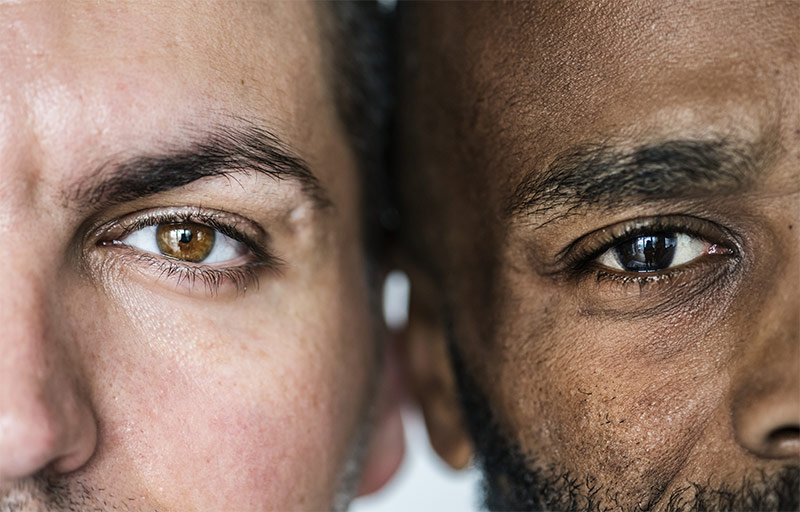
Why did the fires start?
Far from showing signs of exhaustion at the first measures announced in connection with the police involved in George Floyd’s death, the protests took off, spreading beyond American borders.
Protests against institutionalized racism took place over the weekend in Amsterdam, Paris (where participants wore signs with the message “I can’t breathe”, “We are all George Floyd”, “Racism suffocates us”), in Zurich, Geneva, Berlin, London, Cardiff and Manchester. Initially peaceful, the protests degenerated into violence.
“It’s just very frustrating, I’m very angry and very tired. To constantly be hearing about black people being aimlessly killed for no reason is draining (…) The prejudice that black people in America face is the same prejudice we face here,” said Shayne, a 20-year-old woman who was among the protesters in London.
Initially peaceful, the protests also degenerated into violence in the following days in Paris and London.
“The context seems to be tailored for a perfect storm,” writes analyst Iulian Chifu. Dissatisfaction erupted amid the crisis caused by COVID-19, in which the black population recorded a very large number of deaths and illnesses, which can be explained by the fact that essential services, starting with public transport, are disproportionately provided for this category of population, the analyst says. In addition, the economic crisis has hit the underprivileged, among which Hispanics and African Americans are overrepresented, the hardest.
Economic difficulties have exacerbated older frustrations, analyst Noah Rothman believes, identifying in Floyd’s death only the spark that ignited the powder keg of a country with more than 100,000 deaths caused by COVID-19, but also with 40 million unemployed.
There are many voices saying that President Trump poured gas on fire through the rhetoric of the first days of protest – he called on the governors to take harsh measures against the protesters, he announced the mobilization of the federal army to stop “domestic terrorism” and warned protesters who would dare entering on the White House domain they would be welcomed with “the deadliest weapons” and “the most ferocious dogs.”
U.S. President Donald Trump has also been criticized for the racist language borrowed from Miami police chief Walter Headly (who used the same threat as Trump after the riots in Liberty City in 1967: “When the looting starts, the shooting starts.”). However, the president denied that he knew about the threat and the history behind it.
Heavy criticism also came from former Secretary of Defense Jim Mattis. He left Trump’s office due to disagreements with the president over foreign policy issues. Mattis had refrained from commenting on Trump’s activity, and the president has compared him to one of his heroes, General George Patton. “Donald Trump is the first president in my lifetime who does not try to unite the American people — does not even pretend to try. Instead he tries to divide us. We are witnessing the consequences of three years of this deliberate effort,” Mattis said recently.
The base of the iceberg: racism and inequity
Floyd’s death reopened the painful issue of unarmed African Americans killed by police. One of these cases, very similar to George Loyd’s, was that of Eric Garner, who died of asphyxiation after a white policeman strangled him during the arrest procedure, ignoring his repeated cries that he could no longer breathe.
“That’s routine in black America,” said Pulitzer Prize-winning journalist Trymaine Lee, accusing U.S. police of never haing been different. “Black America feel that it cannot breathe”, Lee said.
Michael Jordan, a retired U.S. professional basketball superstar, joined the athletes who mourned Floyd’s death on Sunday. Jordan said he was “deeply saddened, full of pain and very angry” at what had happened and denounced “rooted racism” in the United States. Roger Goodell, head of the NFL, said the protests “reflect the suffering, anger and frustration we feel,” and tennis player Coco Gauff asked in a video message on the TikTok network: “Am I next?”
Killing black suspects is not just a problem for white police officers, but one for police officers in general, a 2018 study found. “We believe that the disproportionate killing of black suspects is a downstream effect of institutionalized racism … within many police departments,” the authors concluded, showing that while about 13% of the US population is black, 28% of those killed by police officers fall into this category.
“The driving force behind the protests is people’s frustration. They feel hopeless and helpless and many police officers and other members of society don’t understand that,” said Bryant Marks, a professor of psychology at Morehouse College.
However, a survey conducted at Monmouth University shows that things are starting to change. Three out of 4 Americans believe that racial and ethnic discrimination is a major problem, compared to 50% of Americans in 2015. Also, 57% of Americans believe that police officers in a critical situation are more likely to use excessive force if the suspect it is coloured (compared to 33% in July 2016). Although they disapprove of protesters’ violent actions (only 17% believe they are fully justified), most Americans believe the rage behind the protests is well-founded (57% believe protesters’ anger is fully justified and 21% believe it is partially justified).
“It seems we have reached a turning point in public opinion where white Americans are realizing that black Americans face risks when dealing with police that they do not. They may not agree with the violence of recent protests, but many whites say they understand where that anger is coming from,” said Patrick Murray, director of the University’s Institute of Surveys.
Through the eyes of a black parent
“How can we properly mourn the loss of a black person who has lost their life while sitting next to someone who can never know that deep-seated grief?” wonders freelancer Laura Cathcart Robbins. Scott, her partner, is white and, while claiming that their relationship is a solid one, Robbins also admits that he cannot share Scott’s most intimate pains and fears. The news about the dramas that happen to people of colour puts them “on separate parts of the couch,” writes Robbins. And that’s not because Scott wouldn’t be outraged or upset by such incidents.
“Being black in this country means risking my life daily. And while being white in America isn’t without risk (…) it is still different, because the system we live in is designed by and for white people”, says the woman.
She admits that she sometimes envies her partner, because he “will never have to worry about the safety of his blond-haired daughters the same way I have to worry about the safety of my sons“. And, at the same time, she feels guilty for these feelings, because “it’s not Scott’s fault that we live in a country where two different realities exist for our families like ours.”
In an article about the risks of being a black citizen, writer Clint Smith says he has experienced this inequity much more acutely since his two children were born. He knows that such a superficial difference in skin colour can expose you to major risks — like dying from COVID-19 or being killed by a police officer, as happened to Floyd. Or to Tamir Rice, the 12-year-old black boy who was playing with a plastic pistol in Cleveland and who was shot by police in 2014.
Smith says that the birth of his children threw him into a maze of anxiety, because a child represents, as one of his friends told him, “discomforting juxtaposition between the joy of seeing the world through his eyes and knowing how the world will see him one day“.
“You are black and you are a woman; you will have to work twice as hard as everyone else.” This was one of the important pieces of advice that Latona Giwa, co-founder of the New Orleans Breastfeeding Centre, received from her father, an immigrant from Nigeria.
Ever since she was 8 years old, she learned that avoiding the police was a basic rule of social hygiene. So, for her too, Floyd’s death opened old wounds and hidden fears.
She is pregnant and about to give birth. She had a doctor’s appointment during the lockdown, and the suspicious way the receptionists looked at her made her wonder what to do so she might look less threatening. She felt the same way as a teenager, when the saleswomen in the clothing stores looked at her like a potential thief. There was nothing to do with her hair, after it had become untamed in the weeks she had been locked in the house, but she pulled her mask down so that her cheekbones and bare eyes could show others that she was smiling and kept her hands in sight.
Skin colour, Giwa writes, ruthlessly determines “How many mistakes will you be allowed to make? How quickly will they blame you for your own expulsion, incarceration, death? How lucky will you be? ”
Giwa says that although she is usually optimistic and tries to believe in the human potential to choose the good, she is sometimes afraid. “Black mothers in America have always known what it is like to carry a life that the world has already decided will not matter,” she said, concluding that a better future can only be built where life, in its diversity, matters.
This is the conclusion reached, almost two and a half centuries ago, by the founders of the United States. The motto that guided the federation until 1956 — “E pluribus unum” (“Of many, one”) — shows the understanding that unity was the only solution to prevent the young nation from becoming “divided into tribal immigrants”, as General Jim Mattis notes in his memoir.
Carmen Lăiu is a writer for ST Network and Semnele timpului.
